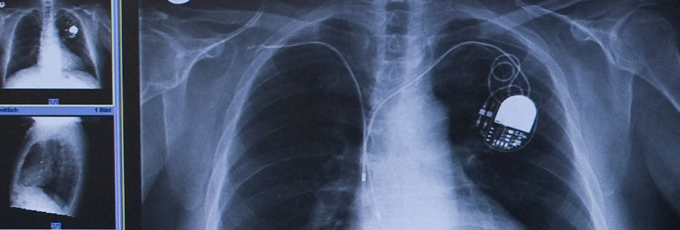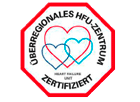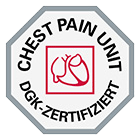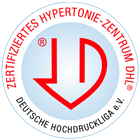Pacemaker systems
Not only can modern pacemaker systems be used to stimulate the heart to beat faster, they can also be used to prevent a life-threateningly fast heart rate and alleviate the symptoms of heart failure. Leads (with electrodes at their tips) extend from the pacemaker's control unit, which is implanted under the skin, and connect it to the heart.

What are pacemaker systems?
Pacemaker systems are used to prevent dangerous cardiac arrhythmias from occurring and, in some cases, are also used to treat severe heart failure.
While conventional pacemakers are used to prompt the heart to beat faster, newer devices can also be used to treat patients whose ventricles beat in an uncoordinated fashion, by resynchronizing the ventricles and making the heart more efficient. Implantierbare Defibrillatoren (ICDs), on the other hand, are used to deliver automatic shocks in order to help control life-threatening tachyarrhythmias. Some devices combine the above-named functions into one, and include a device that is also referred to as an "artificial heart"
Pacemaker systems consist of a small control unit - implanted beneath the skin just below the collar bone - and up to three leads (with electrodes at their tips), which are threaded through veins and reach into the heart.
What conditions are treated with pacemaker systems?
Pacemaker systems can help to correct disruptions in the electrical system that controls the heart. They can be used to treat either a dangerously slow heart rate (bradycardia) or a life-threateningly fast heart rate (tachycardia), and can also be used to help improve heart function. Pacemaker systems can be used to treat a range of conditions, including:
- Sick sinus syndrome (or sinus node dysfunction), a condition in which the sinus node - the heart's natural pacemaker - does not work properly. A pacemaker can take over the role of the sinus node.
- AV block, a condition in which the heart's electrical impulses are slowed as they move through the AV node on their way from the atria to the ventricles. This condition can also be treated with a conventional pacemaker.
- Bundle branch block, a condition characterized by a defect in the heart's electrical conduction system. Patients with this condition may require a pacemaker.
- Severe ventricular tachycardias and ventricular fibrillation cardiac arrhythmias that may lead to sudden cardiac arrest (sudden cardiac death). Defibrillators are used for the primary prevention of sudden cardiac death.
- Heart failure: certain patients can be treated with a device known as a biventricular pacemaker, which helps to make the heart more efficient. Patients affected by life-threatening arrhythmias will require an implantable cardioverter defibrillator (ICD). Devices that combine the functions of both a pacemaker and a defibrillator are also available.
How can pacemaker systems help?
Modern pacemaker systems are intended for the treatment of patients with dangerous cardiac arrhythmias or severe heart failure . A wide range of highly specialist and technologically advanced devices are available.
Pacemaker systems are approximately matchbox-sized devices that are powered by lithium batteries and are implanted beneath the skin. Pacing leads (with electrodes at their tips) are threaded through blood vessels and connect the device to the heart. As these electrodes can take continuous measurements of the electric activity of the heart, and can directly stimulate the heart muscle using targeted electrical impulses, they can control the heart's function.
In order to be able to do this, the pacemaker is programmed in such a way as to ensure that electrical impulses are only generated when a disruption in the normal electrical activity of the heart is detected, and to remain on standby while the heart is working as it should do. Some systems, which are referred to as rate-adaptive pacemakers, also monitor changes in respiration rate and body temperature in order to adapt the pacing rate in line with changes in the patient's level of activity.
What happens during a pacemaker implantation?
Aside from the fact that the procedure may require the use of either local or general anesthesia (biventricular pacemakers), depending on the type of pacemaker system to be implanted the implantation procedure is identical for all types of pacemaker systems:
- A small incision is made just below the left collarbone.
- Using x-ray guidance, the physician will then thread the pacing leads (with electrodes at their tips) through a vein and advance them to the heart.
- The electrodes are anchored to the heart muscle and connected to the pacing unit, which is then inserted into a "pocket" cut between the muscles of the chest wall.
- The physicians performing the implantation will then trigger the patient's arrhythmia in order to test the system and ensure proper functioning. If the procedure involves the implantation of a biventricular pacemaker, a special guide wire is used to insert the additional (third) lead into a vein near the left ventricle.
- At the end of the procedure, the incision below the collarbone is closed using sutures.
Event recorder
An event recorder - also known as a loop recorder - is a small device that is implanted beneath the skin and used to diagnose cardiac arrhythmias by recording the cardiac events associated with such arrhythmias. more





